Space to Explore
May 24, 2018
By Luke Woodling ’17MBA
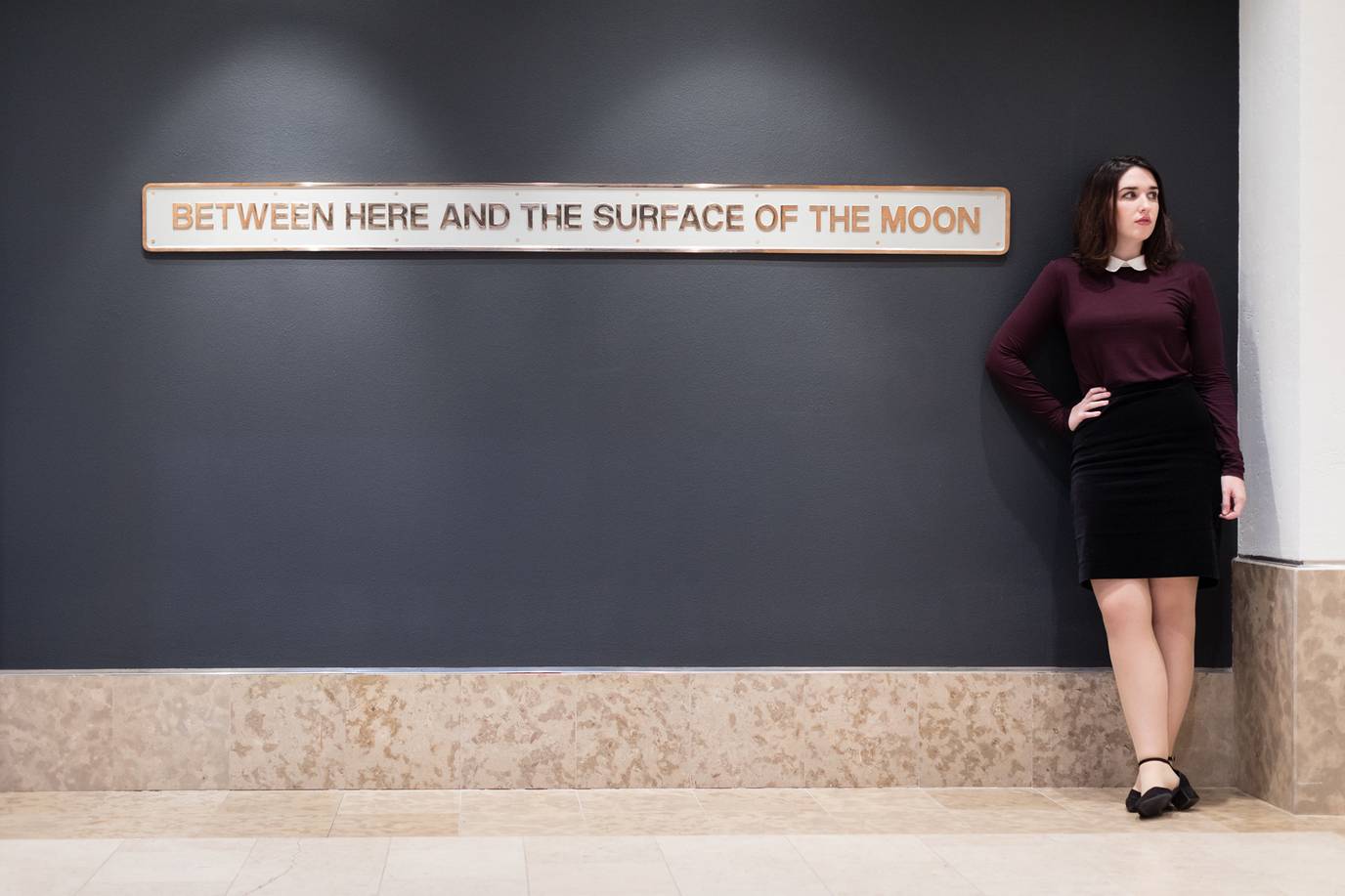
At Rollins, Rebecca Charbonneau ’16 found her way back to her first love through the unlikeliest of routes, setting her on a path to one of the world’s most prestigious scholarships and a PhD program at Cambridge University.
For as long as she can remember, Rebecca Charbonneau ’16 has been fascinated by space. As a kid growing up in Miami, Charbonneau devoured books by famous SETI scientists and filled the margins of her fourth-grade diary with critiques of Ptolemy’s Earth-centric map of the universe. When she was 13, she bought a Dobsonian telescope with several years’ worth of allowance and spent countless evenings sprawled out in the front yard, scanning the night sky and wondering if anyone was looking back.
With her head in the stars, Charbonneau envisioned a career in astrophysics, but a learning disability in math dashed those dreams before she finished high school. While the setback scuttled her future in science, it couldn’t extinguish Charbonneau’s fervor for the final frontier.
At Rollins, Charbonneau reveled in the freedom of the College’s liberal arts curriculum, voraciously exploring an array of subjects before eventually settling on a double major in art history and critical media and cultural studies. She added a pair of minors for good measure. All the while, the opportunity to explore was helping Charbonneau work her way back to her first love.
During her first semester at Rollins, Charbonneau took Introduction to Women’s Studies with art history professor Kim Dennis. That course—and more importantly the connection she forged with Dennis—not only led Charbonneau back to her childhood fascination with space but also set her on her current prolific path, which has included stints at NASA, graduate programs at Oxford and Cambridge, and awards at international space conferences.
In spring 2017, Charbonneau earned her master’s in the history of science, medicine, and philosophy from the University of Oxford. This past February, she was one of just 35 U.S. students to earn a 2018 Gates Cambridge Scholarship, which is awarded to outstanding applicants from countries outside the U.K. to pursue a full-time postgraduate degree in any subject available at the University of Cambridge.
We recently caught up with Charbonneau as she wrapped up a graduate internship at the National Radio Astronomy Observatory in Charlottesville, Virginia, and prepared to begin a PhD program in the history and philosophy of science at one of the world’s oldest and most prestigious universities.
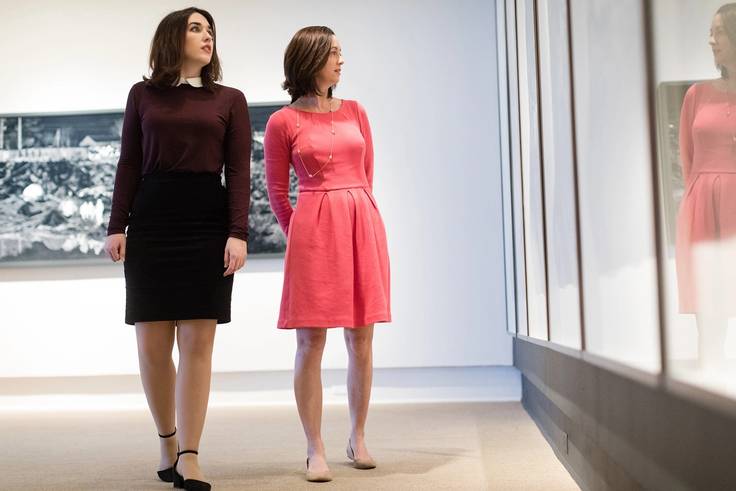
You originally attended Mount Holyoke, but an illness forced you to drop out 10 days before the end of your first semester. What was it like starting over at Rollins?
“I was really, really grateful that Rollins took a chance on me because frankly they could have looked at my transcripts and said, ‘This is a person who dropped out of college after not even a full semester and has Cs and Bs.’ But I think they looked at my entire application where I explained what had happened and explained my dreams and what I wanted to accomplish and they decided to take a chance on me. I don’t know what I would have done if I hadn’t been admitted to Rollins.”
You started at Rollins as an English major. How did you end up majoring in art history and critical media studies?
“It’s all Dr. [Kim] Dennis’ fault. My first semester at Rollins I took Intro to Women’ s Studies, and she inspired me to become a women’s studies minor because of how engaging her class was. I deeply enjoyed her classes. They’re hard—two of Dr. Dennis’ classes are the only Rollins classes I ever got Bs in—but I’ve never learned more. She really changed and shaped my academic career.”
Can you walk us through how that evolution took shape?
“Dr. Dennis would frequently use examples from art history in her women’s studies classes. That led me to take a few art history electives, and I eventually made it a minor. Then I read Galileo’s Middle Finger by Alice Dreger and realized that the history of science was a thing. I was like ‘I can do this? This is so cool.’ I remember approaching Dr. Dennis and I said, ‘OK, I want to be an art history major. I know I only have a year and a half. How do I do that?’ I ended up working straight through my junior and senior years. I took classes in the summers. I did independent research abroad during my winter breaks. I didn’t have a vacation for the last two years of my undergraduate experience.”
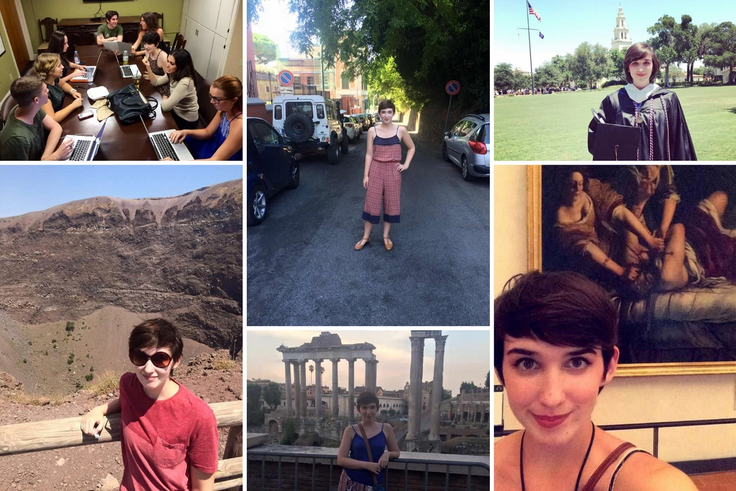
How did you end up at Oxford after graduation?
“I had arranged with Dr. Dennis to do a final art history research capstone on a 17th-century naturalist illustrator named Maria Sibylla Merian. Several of her paintings were held in the British Museum, so I applied for a grant to do independent research for my senior capstone project. I got it and I was sent to London to do research in the archives at the top of the British Museum.
“While I was there, I took the opportunity to do some additional research. In my African art history classes, we’d learned about something called the Pitt Rivers Museum, which was founded by Gen. Pitt Rivers, who was a Colonial official in Britain. He donated his collections of odds and ends from his travels of the world and put them in the Pitt Rivers Museum in Oxford. So I thought, ‘I’ll take a day trip to Oxford to visit this museum.’ It’s really cool but it’s really small. So I decided to take a city tour of Oxford. As I was walking around the city, I said to myself, ‘Oh, my god. I need to come here. This is great.’”
What was the focus of your research at Oxford?
“I studied international collaboration within the space sciences, focusing on astrophysicists from the U.S. and the Soviet Union. In particular, I focused on a case study looking at the relationship between Soviet radio astronomer Iosif Samuilovich Schlovskii and U.S. astrophysicist Carl Sagan. So what I’m very much interested in as a scholar is exploring the Soviet side of things, because Soviet documents have long been withheld not only from the U.S. public but the public in general. There aren’t many historians who research SETI, so there is still very much left to explore.”
Oxford is one of the best universities in the world. Did you feel prepared to succeed in that environment?
“Going in, it was terrifying. I think very few people think of themselves as being of that caliber, but I learned very quickly how well I’d been prepared. The second I started going to classes and participating in classroom discussions I knew that Rollins had absolutely prepared me and that I absolutely belonged there. To succeed at Oxford, you need to know how to participate in seminars, you need to know how to write really well, you need to know how to think outside the box, and these are all skills I gained in my Rollins classes.”
Last fall, you were a graduate intern at the NASA History Office in Washington, D.C. What did you do there?
“It was very much a working internship. I was doing fairly advanced stuff. One of the historians I worked with, Steven J. Garber, is working to update a monograph called Research in NASA History, which has a ton of resources for aerospace historians, and I worked with him to redesign it. Beyond that, I ran the NASA History Facebook and Twitter pages along with one of my co-workers, which was fascinating because we posted something new every single day.”
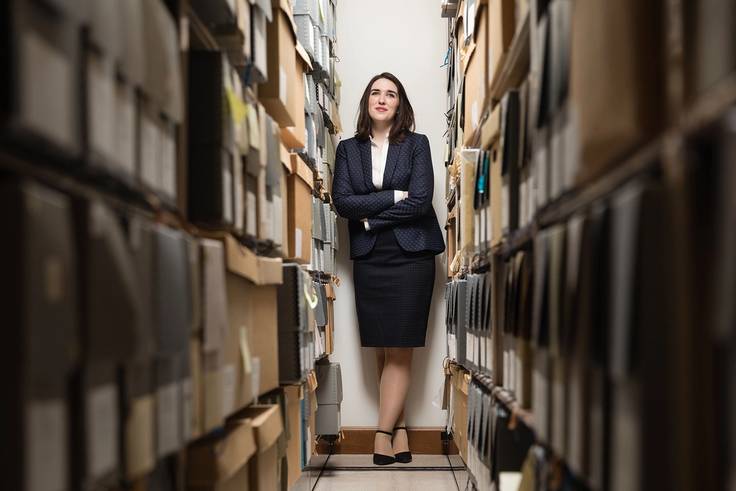
So you’re really living out your childhood dream.
“Oh, big time. Every day when I walked into NASA, I would think, ‘If I could have shown 10-year-old me what I’m doing now, I wouldn’t believe it.’”
At Rollins, you majored in art history and critical media studies. Can you talk about how that has translated into what you’re doing now?
“Both have prepared me in kind of surprising ways. Art history in a less surprising way in that it is a history subject, so it prepared me in that I was able to analyze text and make complex arguments supported by evidence. I think it also gave me an advantage because I wasn’t limiting myself to just text documents but to a visual medium as well, which is useful now more than ever because material culture and cultural history are really big in history right now.
“At NASA, I used my CMC skills more than anything because one of the things that makes me unique as a candidate is that I’m able to put together informational videos and other sorts of visual media. CMC taught me how to take information and present it in a visual form, which is really, really useful in this day and age where people don’t want to read huge swaths of text. They want the content to be packaged for them. I think that’s something that sets me apart from my peers, because there are certainly many people who are talented historians and talented writers, but the skills I gained in CMC have been incredibly useful.”
You were a finalist for the Rhodes Scholarship and won the Gates Cambridge Scholarship. Tell us a little more about that scholarship.
“It’s very similar to the Rhodes in that it’s a full scholarship. It funds all of your tuition, room and board, and a stipend. It also includes opportunities to participate in workshops every year, and you have a bursary that you can tap into for travel and courses. Additionally, it puts a large focus on networking. You aren’t just given money; you’re invited to be a part of the Gates Cambridge network, which is a global network. In fact, every country is invited to participate except for Britain, so you’re really part of a global community at Cambridge. They highly encourage scholars to work together and collaborate.”
This October, you’ll start your PhD program in the Department of History and Philosophy of Science. What are you most looking forward to?
“Cambridge is my dream program. It offers a lot of opportunity for someone in my field. I specialize in the history of radio astronomy, and radio astronomy really evolved at Cambridge. For example, currently, the Cavendish Laboratory group is one of the key project leaders for the Square Kilometre Array, so this makes Cambridge a fantastic atmosphere to be doing my research in.”
What are your goals post-PhD?
“If I’ve learned anything in my two and a half decades on the planet, it’s that it is really impossible to plan too strictly far ahead in the future. My life has changed more in the last year than I could have possibly predicted. I do have several ideas about what I’d like to do. I’m very interested in teaching and I love communicating my ideas to people, so professorship is very appealing. There are so many exciting career paths I could potentially take. For example, it would be interesting to be the chief historian of NASA, or a curator in a science museum. Recently, I’ve also become interested in policy because I’ve seen the many ways my research overlaps with hot issues in the geopolitical environment, and I want to see if any of the skills and knowledge that I’ve acquired can help the world in any way.”
How did your Rollins education prepare you to navigate an uncertain future?
“I can answer that in two ways. The first is that the flexibility and the well-roundedness offered by a Rollins education have been incredibly beneficial to me. Having the opportunity to really explore a variety of disciplines and being able to choose more than one was incredible, and that’s not something that is afforded to everyone. In Britain, for example, the system is much more rigid. For me, that would have been disastrous. I have clearly changed and also added things along the way, and that was huge in helping me find out exactly what it was I wanted to do. I think it’s such a shame that some institutions force kids to decide what exactly they’re going to do with the rest of their lives when they’re just 18 years old. The opportunity to explore and learn in a very wholesome way was huge.
“The other reason is the institutional gravitas that Rollins has. The quality of education is phenomenal. The individual attention from professors and the ability to form meaningful relationships with professors were important. It’s something that students at bigger schools don’t get to do. When a professor who knows you more deeply gives you a recommendation, it’s going to help you stand out when it comes to applications—whether that’s a job or grad school.”
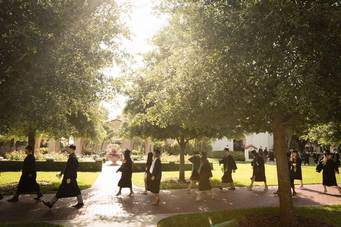
Rollins Results
From our innovative curriculum to our commitment to career services, find out how Rollins prepares our graduates to lead meaningful lives and forge productive careers.
Read More
May 01, 2024
Bright Lights
Rollins’ 2024 valedictorians share how the College connected them to their purpose, what they’ll miss most, and what’s next in their meaningful lives and productive careers.
April 26, 2024
Rollins Celebrates Asian American & Pacific Islander Heritage Month
Rollins honors the lives and invaluable contributions of Asian Americans and Pacific Islanders through a diverse range of engagement and education.
April 24, 2024
Al Haddad and Diaz ’24 Present Research at Business Conference
Business professor Serina Al Haddad and Daniela Victoria Otelo Diaz ’24 recently presented research on luxury fashion conglomerate LVMH’s pandemic challenges at the Southeast Decision Sciences Institute (SEDSI).
